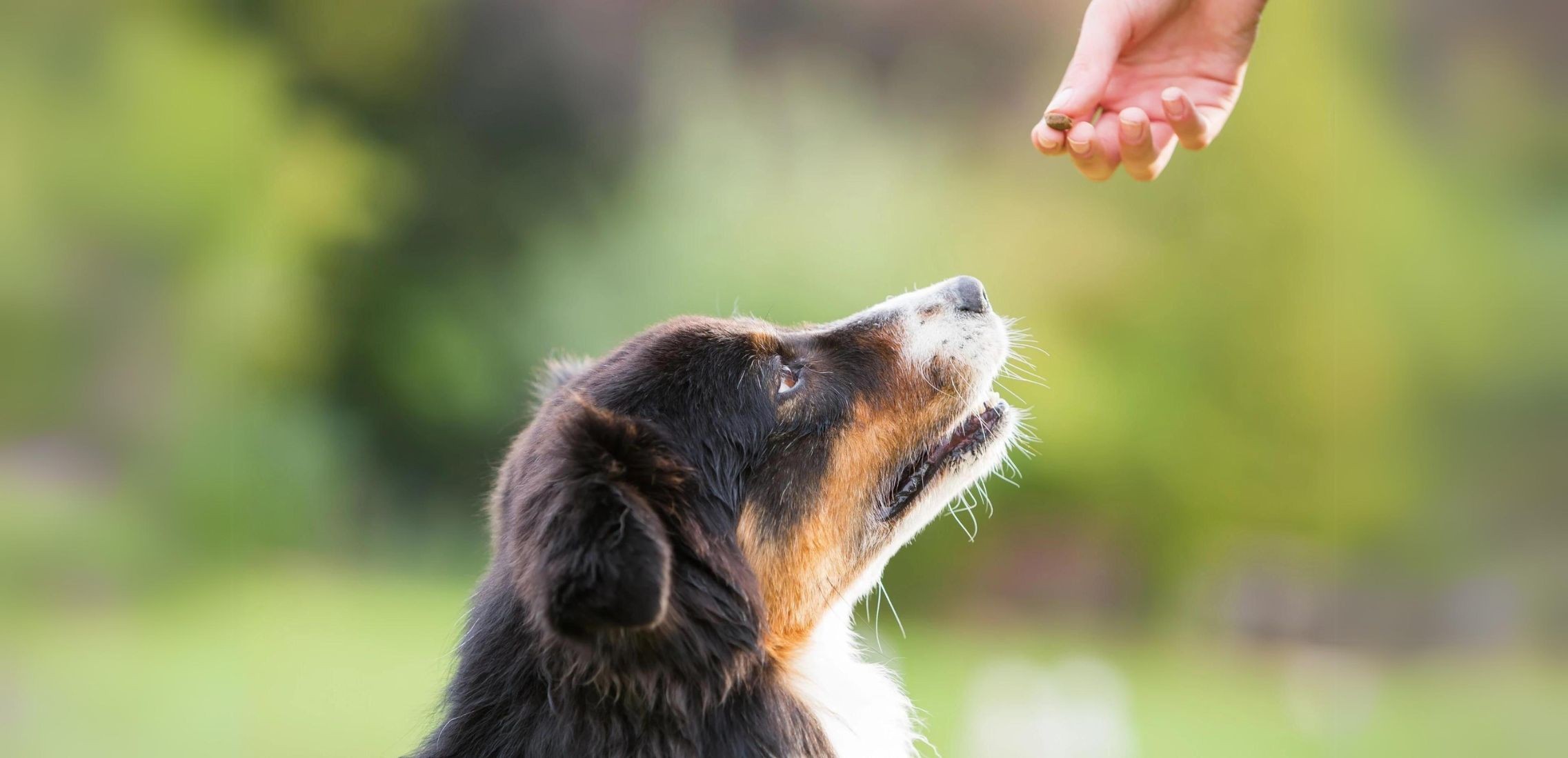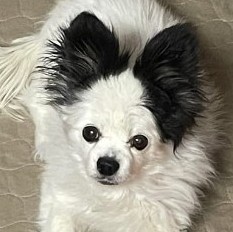Your Cart is Empty
🎉End of Year Sale | Up to 40% OFF
🎉End of Year Sale | Up to 40% OFF
🎉End of Year Sale | Up to 40% OFF

If you want your puppy to grow up a model citizen, then you’ll be interested to know that positive reinforcement is making waves in the puppy training world, with pups young and old responding very well to positive-forward encouragement.
But what is positive reinforcement training? Does positive reinforcement dog training work? And how do you apply these methods to your pup’s routine?
We’ve got the lowdown on all the best ways to lift your dog’s spirits, as well as their skills, with these game-changing training methods.

As a kid, the best way to get us to behave was through money, food or video games. And I’ll take a guess that it wasn’t just our household…
Yep, we all like rewards, and so do our dogs. Which is why positive reinforcement, also known as rewards based training, works so well. Desired behaviors are rewarded, which in turn means your dog is more likely to repeat this desired behavior.
Luckily, our dogs don’t care about their piggy banks, but they do care about fuss, food and a good frolic with a toy. So it’s no surprise these are the common rewards used in this kind of puppy training.
Notably, a positive reinforcement ethos does not include any form of negative reinforcement to teach a dog how to behave. Whether that be fear (through punishment, aggression or loud noises) or pain (shock or prong collars), which are the basis of some other training methods. Negative reinforcement training is unkind and cruel, and often ends up with a confused and anxious dog.
Positive reinforcement dog training focuses on using a reward system to encourage dogs to submit to desired behaviors.
Positive refers to the process of ‘addition’, meaning ‘to add to’. This style of training adds in things that your dog likes, such as treats and belly rubs, which are implemented after signaling for your dog to perform a specific action or behavior; sit, stay, etc. Through repetition this training should strengthen their response to certain commands, doing so in a positive and fun way for both you and your pup.
Where positive reinforcement training adds, negative reinforcement takes away.
In this style of training, dogs will be presented with something they don’t like, perhaps something they find unpleasant or frightening, a command will then be given, and if the dog complies, the negative element will then be taken away. These elements can be anything from an unpleasant smell or visual aid to a physical pull on a choke collar.
Negative reinforcement comes with a myriad of issues, and often does more harm than good. Fear-based learning has been shown to heighten a dog’s anxiety and aggression, as well as forming a lack of trust between dog and owner.
Positive reinforcement methods focus on strengthening desired behaviors, as opposed to reacting to and punishing unwanted ones. It works on a philosophy of trust and care, gently encouraging dogs in a loving environment where they are more likely to thrive, learn and become social, well-rounded companions.
The process of teaching through positive reinforcement begins with a command, given to the dog. This can be a verbal or physical cue, perhaps a word or open vowel sounds, or perhaps a click or lift of the hand. The owner then waits to see how the dog responds - do they comply straight away? Is repetition of the cue needed?
As soon as the dog delivers the desired behavior, a treat of some kind must be given instantly. Depending on your dog’s needs and preferences, this can be anything from a food-based treat, praise and fussing, to toys and playtime. It may be worth trying out a few different rewards to find the one that works the best for your dog.


Once you find the most fitting one, it is important to stay consistent with this, as changing things up suddenly can lead your dog to become confused and interrupt the training pattern. Dogs learn through repetition, and very quickly will come to associate a certain type of treat with a certain type of behavior or command.
Remember, environment is everything. Trying to train your dog in a loud or busy environment with lots of distraction - be it people, other dogs or even just interesting sounds and smells - is never going to be conducive to effective learning. You will want to ensure that your surroundings are as peaceful as possible, somewhere where your dog can really focus and get the most out of their training.
Using clickers as a way to help train your dog has also been shown to be super effective. The clicker sounds acts as a clear marker for the behavior; you give the command for desired behavior, if your dog delivers the behavior you can then give them a treat and use the clicker to mark the behavior. Repeating this auditory cue can help your dog learn quicker. Why not try working alongside a professional trainer to really get your pup’s training up to scratch!
When using positive reinforcement training, it is important to track your dog’s training and progress to make sure that your use of positive reinforcement is actually working. It is also important to keep monitoring your dog’s responses throughout the process, as well as being sure to apply the training consistently. Because how else will you know if training your dog with positive reinforcement has been effective?
One of the biggest mistakes that new dog trainers make is to drag out training sessions for far too long. Puppies and younger dogs in particular have very short attention spans, and so hours of training is not going to stick; if anything it can hinder the process and make your dog less likely to listen to you.
Keep training sessions short and sweet, with regular breaks and lots of fuss in between. By keeping sessions shorter and breaking them up with additional stimulation such as play, walks or fussing can really help keep their attention for longer, allowing them to properly take in and digest the bite size-pieces of learning.


Rewards are at the heart of the positive reinforcement process, securing desired behaviors in place and letting your pup know that they are doing a good job.
There are all sorts of rewards that you can offer your dog, and depending on their preferences, age, or health needs, certain types of reward may be more or less effective.
It is often said that the way to a dog’s heart is through their stomach, and this is often true! Food is an excellent motivator for most dogs, with tasty food scraps or their favorite dog treat often coming in as the most effective form of reinforcement when training. Of course all dogs will have a different palette, and so trying out some different flavors will help you find the right fit for your pup.
A little love can go a long way, with fussing and praise also proving a firm favorite amongst dogs and trainers alike when it comes to affirming desired behaviors. Some dogs may also respond well to being presented with their favorite toys or puzzles as a way of saying well done after a training session.
All puppy training, even positive reinforcement, requires superhuman levels of empathy, patience and practice.
However, with these 8 top tips, you’ll be equipped with the insights to help your puppy shine... Meaning you can build a brilliant bond with a well-behaved doggo!
To build associations, timing is your best skill. The reward must occur very quickly after a desired behavior, so your pup can be sure to associate it with the action they just performed. So be alert and responsive, but don’t worry if you miss a beat, just keep trying.


Teaching your new puppy to pay attention to you is an invaluable skill. This is the foundation for all your future training sessions, as you’ll be able to ensure they are listening and receptive to what action you’re requesting.
Practice makes perfect. Start with the most basic form of what you want and reward from there. For example, lure your dog into a sit using a closed hand, opening and offering the treat as soon as that little furry butt hits the ground.
Layer in a hand signal and a command once your dog gets the idea. If your dog’s getting confused ask yourself - “How can I make this easy to get right?”. Never be afraid to take a step back.
Short bursts of training are more effective than long study sessions. And keep your commands short too, usually to one word. Anything longer won’t fly with Fido!
Make sure your hard work isn’t being undone by confusing messages. Get everyone in the family on board, using the same techniques and commands. Maybe even add a post-it to the fridge with all your commands on!
Be sure to think through your dog’s connections, even when they aren’t necessarily in a training session. If you value a calm dog, giving them a pat, a treat, or a toy for lying quietly by your feet can go a long way.


Is your dog doing something you don’t like? Try redirecting them. If that barking is getting excessive, can Fido come and perform a sit for a treat instead? Turning the negative behavior into something they can feel positive about will help shape your dog’s habits and natural inclinations.
Most dogs are highly food-motivated, so food based treats work especially well for training. Experiment a bit to see which kind works best. Bear in mind that you’ll need to use very small amounts, even pea-sized, for puppies.
Some dogs, however, are very prey driven and love nothing more than a game of tug or fetch. While others will take a “good boy” and some fuss over a tug toy any day. So figure what your pup responds best to and use it wisely.
Eventually, as your dog matures and their habits become second nature, you can fade out any edible treats slowly. Your dog will soon be adept at working for your praise, with the occasional treat thrown in for good measure.
Puppy training is a long journey, but one well worth the effort. A dog that’s grown up with positive reinforcement will have a great future ahead of them. Whether they are a guide, a friend or an athlete!
See How Dog Owners Are Using These Leak-Free Potty Pads to Keep Their Homes Clean and Pups Happy
4.7 ⭐⭐⭐⭐⭐
Over 100,000 Dog Owners Saved Money With Potty Buddy™
The washable pee pads that absorb anything your dog throws at them, while keeping your floors and furniture stain-free.
✅ Super Absorbent and Leak-Proof
✅ Great for Potty Training
✅ Ideal for Puppies and Older Dogs
✅ Washable and Reusable For Years
✅ Save over $400/year by not buying disposables
-60 Day Money Back Guarantee-

⭐⭐⭐⭐⭐
-Diana D.
These pads are a life saver for my kitchen floor and bedroom carpet! Just ordered 2 more!




Check Out Our Most Popular Content